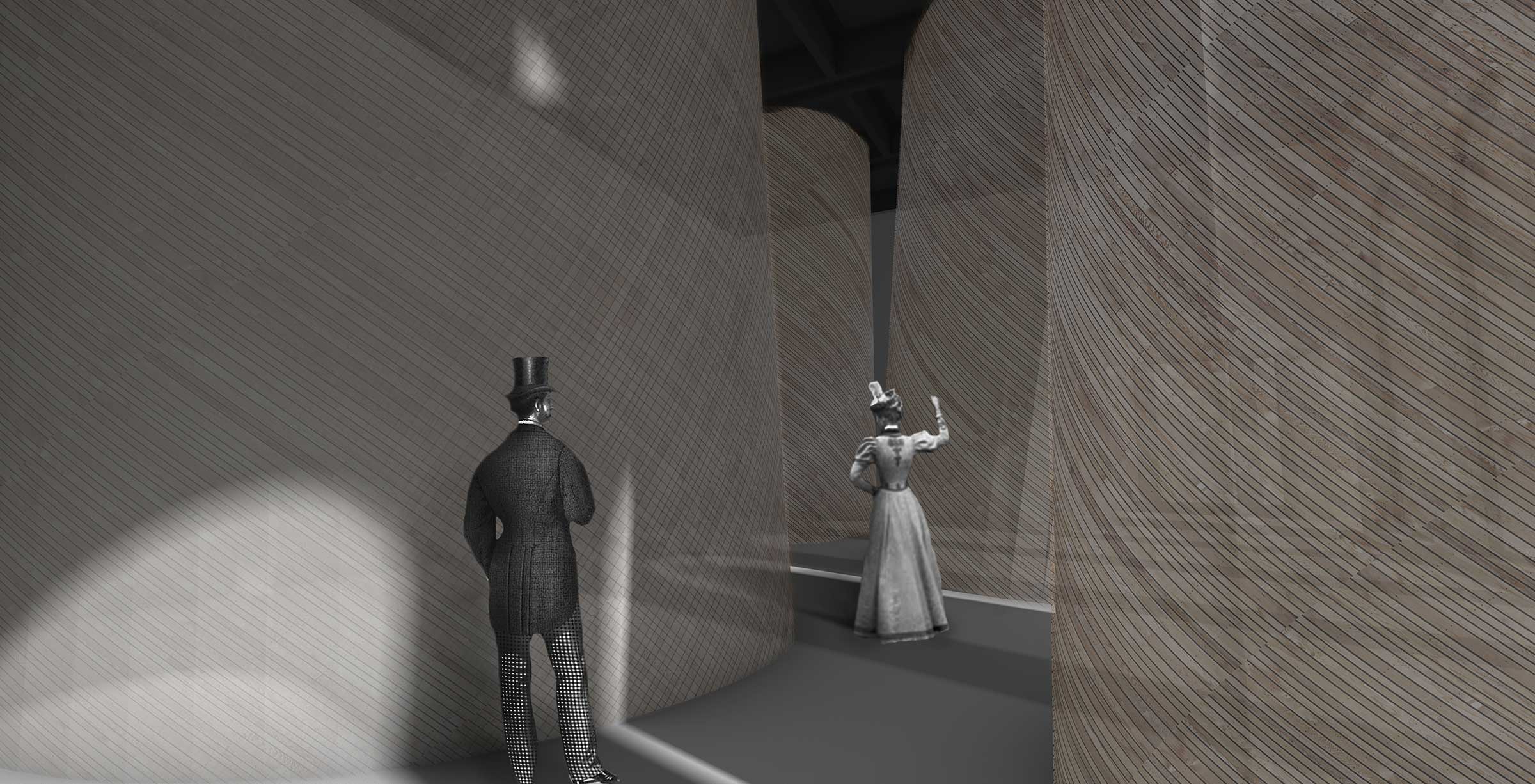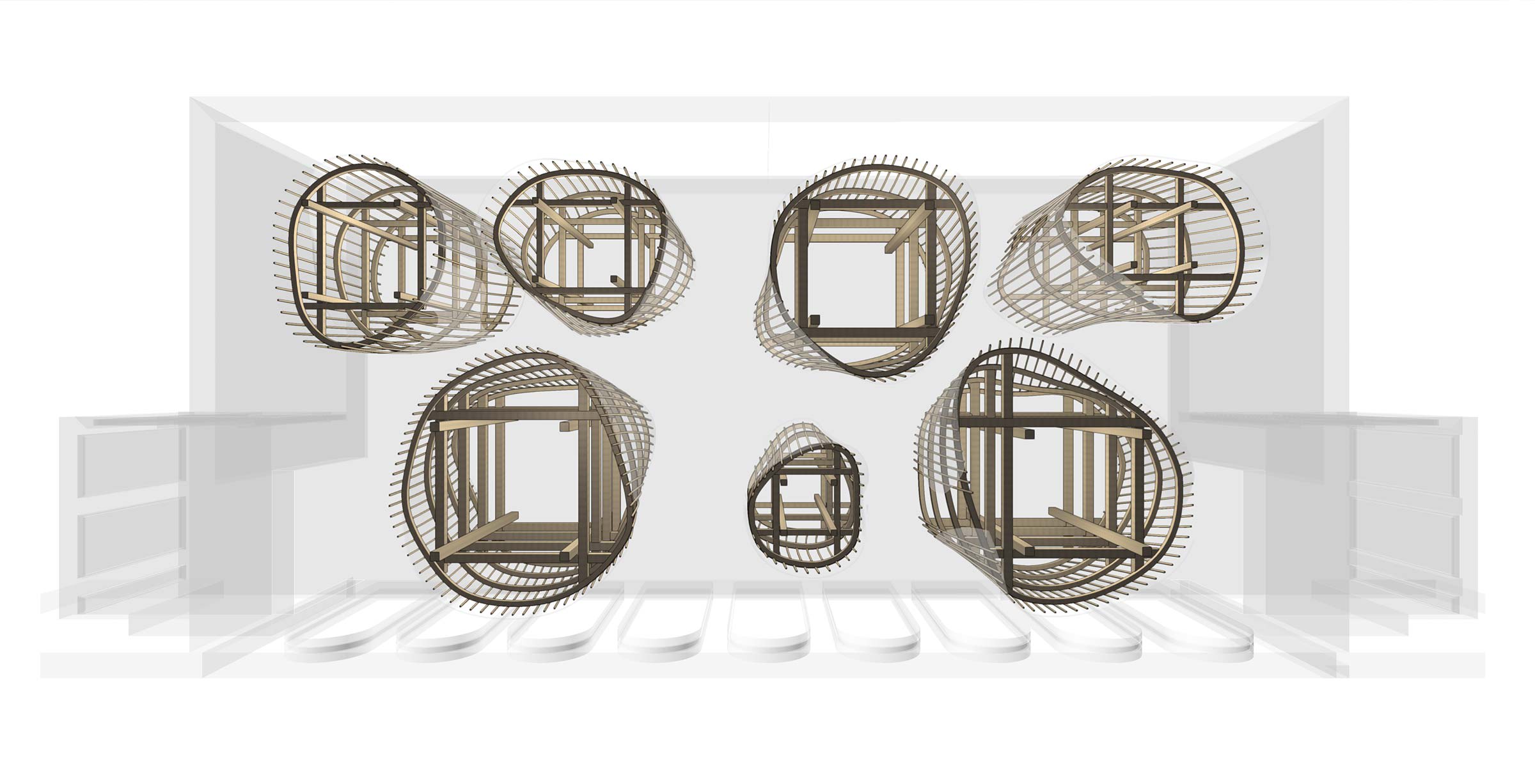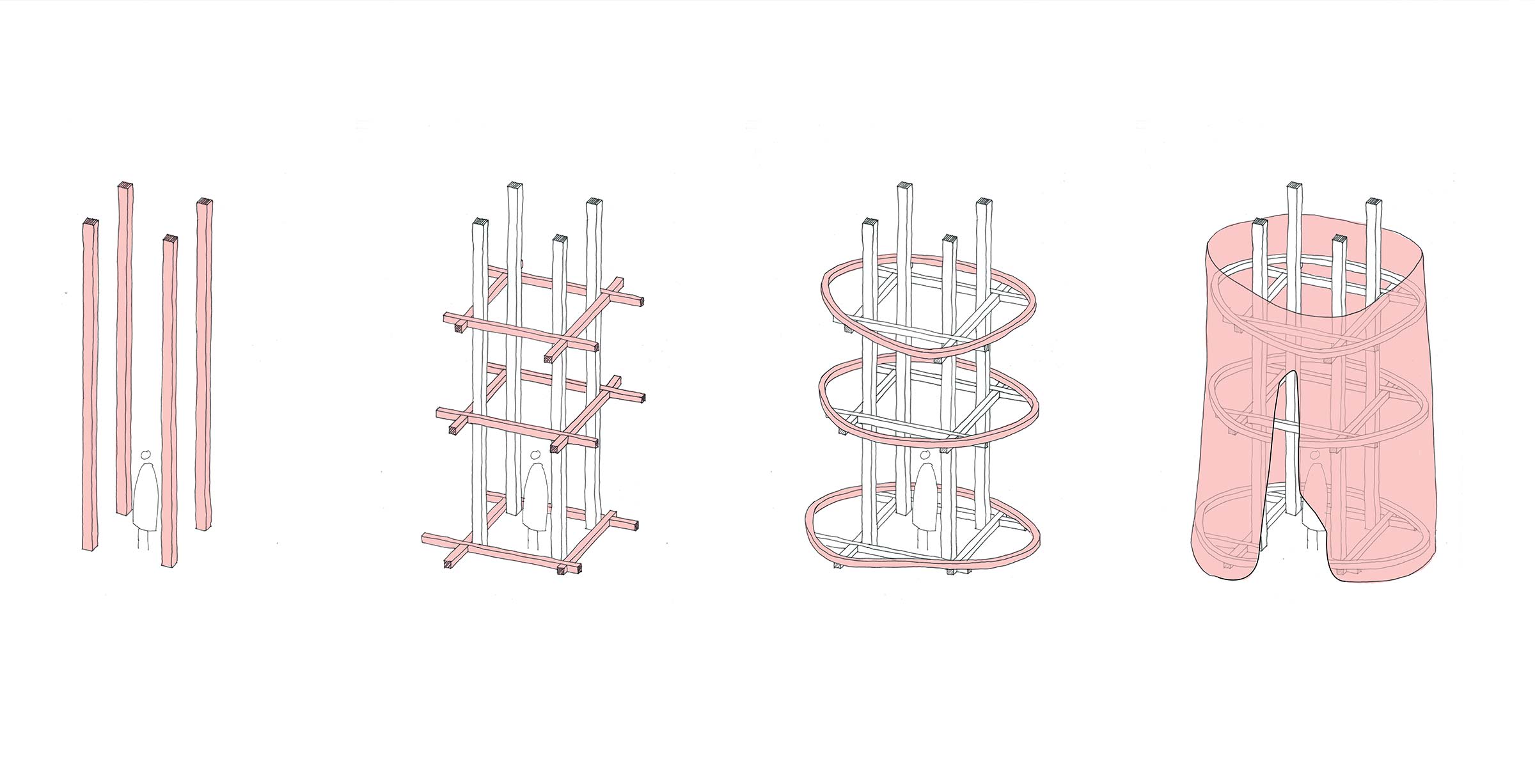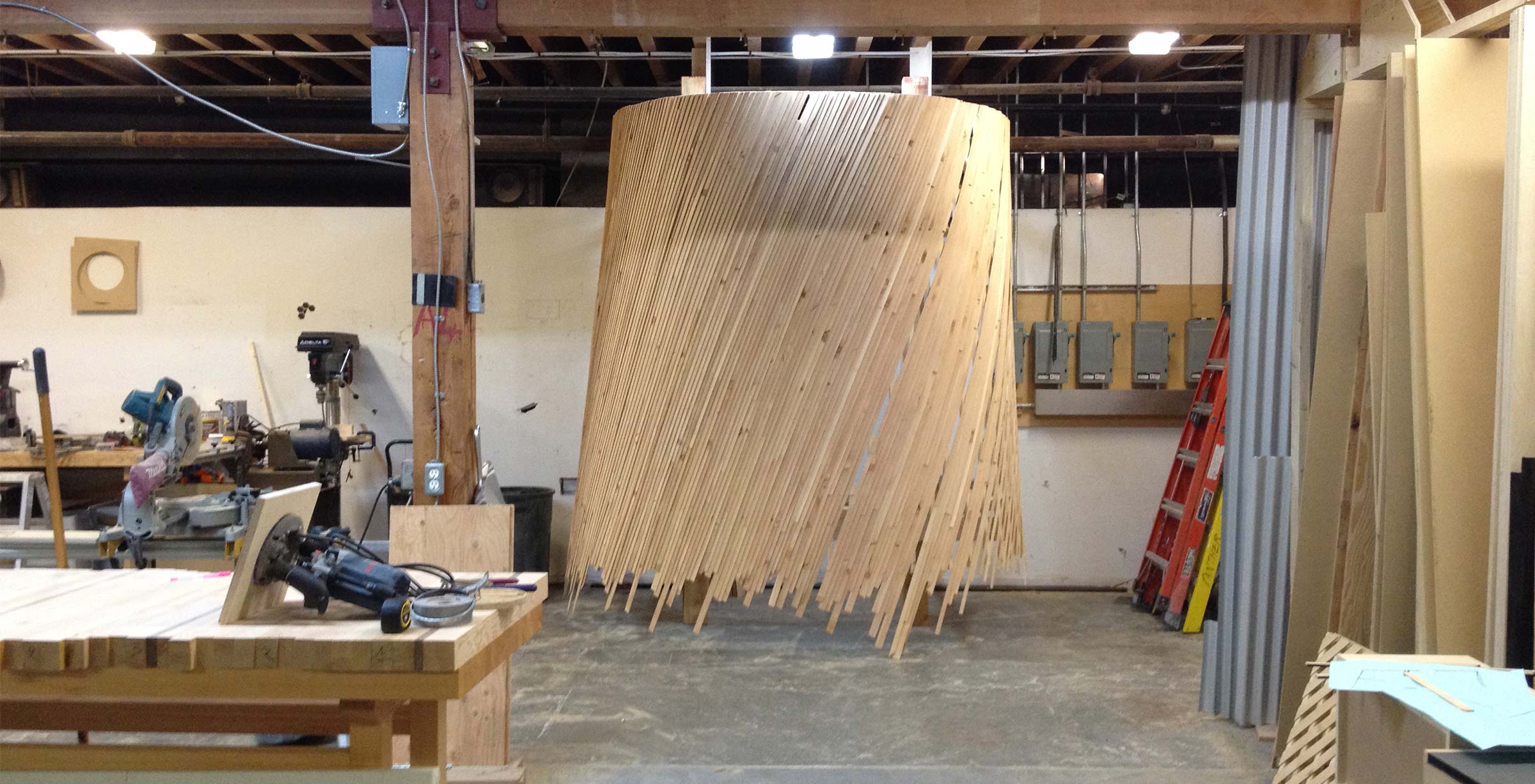
Principle Architecture is a six-person firm that scales up as needed. However, despite its small size, the work the team delivers makes a huge impact. Working with primarily public institutions, municipalities, and community groups, the firm’s core practice is geared toward projects that support community development and enhance the quality of public spaces.
Based in Vancouver, Principle Architecture strives to embrace the city’s “culture of wood” through design. By exposing the tension between the idyllic forest in its raw form and the resulting lumber used to urbanize the city, the firm finds new ways to celebrate this important foundation of Vancouver’s history.
The firm was recently tasked with designing an exhibition exploring the history of wood in Vancouver. The project had a daunting challenge: the team only had five weeks to completely design and build it.

An Opportunity to Carve Out Vibrant Designs
“We needed a model that could be continually fed,” says Daniel Irvine, intern architect at Principle Architecture. “An iterative process that is automated, but resilient.” Searching for a way to create an “immersive, emotional experience” within such a short turnaround time, the firm decided to switch from Grasshopper, the algorithmic modeling tool for Rhino, to Marionette, the tool natively available within Vectorworks software. Through the use of the Marionette tool, Principle Architecture was able to maximize construction efficiency while still maintaining the design components needed to tell this story.
“Several years ago, we switched from being a 2D drafting, black-lines-on-paper office to using 3D/BIM workflows for all of our projects,” says Irvine. “Since then, and with the encouragement of Geoff McBeath at our service-provider, Resolve Software Solutions, we have increasingly tried to use Vectorworks for as many of our digital design processes as possible — both in order to keep our tools and processes integrated, as well as to test and push Vectorworks’ capabilities."

Drawing on the experiential aspects of the forest and the use of the tree as a construction resource, the design uses wood to create an environment that is both ominous and informational – a series of exhibit spaces in the shape of large tree trunks. The interior of each exhibit space consists of a traditional post and beam structure, a popular building method in Vancouver, with rings around the outside of the framework. A “skin” is then placed around the rings to enclose the space and to act as an abstract replica of fir bark — an entity well known to city inhabitants. “The concept was to be romantic and rational,” says Irvine. “We were constantly designing while resolving, and integrating our physical mockup with digital modeling. Marionette ensured this was buildable.” Based on Python scripting, Marionette allows users to assemble scripted nodes into a network. These networks can create or modify geometry or be converted into custom plug-in objects or menu commands. Jean Dières Monplaisir, intern architect at Principle Architecture, was tasked with running (and re-running) the Marionette scripts. Because Dières Monplaisir had experience with Grasshopper, he was able to learn Marionette in a very short time.
Because the form, assembly, and fabrication files of our digital model were controlled by Marionette components, we were able to respond to the evolving requirements of the project and immediately be able to represent the changes to the client.Daniel Irvine, Principle Architecture
“It helped to have experience and knowledge of Grasshopper, to understand both the concept of parametric design as well the principles and processes of using a graphical-scripting interface,” says Dières Monplaisir. “Just as helpful, however, was the fact that we had a specific project —with specific design goals and outcomes — that we were attempting to use Marionette to help with. Rather than simply trying to ‘learn Marionette,’ without any specific application, we knew what we wanted it to achieve, and how we thought it could be useful, and these intentions focused us on how and what we needed to learn.”
Since Marionette is a recent addition to the Vectorworks feature offering (it was added in 2016), Irvine and Dières Monplaisir had very little to base their scripting ideas on. However, with the help of Vectorworks team members through channels such as the Vectorworks Forum, they were able to get their questions answered in order to achieve their design goals.
“It was a breakthrough for us — we didn’t think we could do it,” says Dières Monplaisir. “We tested everything spatially within Marionette to help with the pre-fabrication of materials. Then, every time the structure was updated, Marionette updated the file automatically.”

“We were able to make modifications without having to redraw everything,” Irvine adds. “It was like having a robot friend doing the work you dread. Since we knew we wouldn’t have the time or resources to continually redraw and integrate changes manually, we relied on Marionette to do the coordination.”
With the help of Marionette, Principle Architecture was able to provide the documentation crucial for efficient construction, as well as the accurate visualizations needed to update the client on their progress — deliverables that would have never been possible without Marionette’s dynamic output.
“Because the form, assembly, and fabrication files of our digital model were controlled by Marionette components, we were able to respond to the evolving requirements of the project and immediately be able to represent the changes to the client — such as visualizations, walkthroughs, floorplans, etc.,” says Irvine. “This allowed the client to participate in the process and to trust that we could respond to the contingencies of the project.”

Here is the Truth About Marionette
Thanks to Marionette, an exhibit celebrating the roots of Vancouver was able to take hold. In spite of time and resource constraints, Principle Architecture produced a design they were proud to share and highlight. Their key takeaway?
“Marionette is changing how we can solve problems,” says Irvine.
Stay in the know with the latest insights
Subscribers receive news, customer stories, success and learning tips, event information, and other important announcements form Vectorworks.
By submitting this form, you agree that Vectorworks, Inc. and its authorized partners may contact you in regards to news, offers, and the use of our software, services, and platforms. Learn more about our privacy practices and your data on our privacy page.*